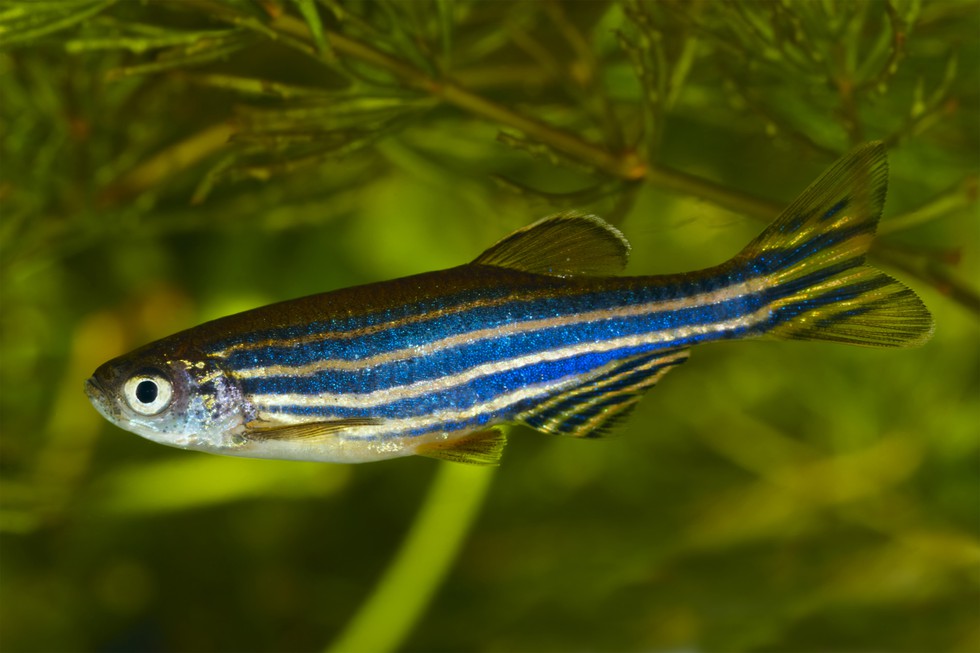For the first time, scientists have created a comprehensive atlas of a zebrafish’s nerve cells. This detailed map sheds light on how these remarkable fish can fully regenerate a severed spinal cord, potentially offering valuable insights for developing human spinal cord injury treatments. The findings were published on August 15 in the journal Nature Communications.
Zebrafish: A Model for Spinal Cord Regeneration
Tiny and translucent, zebrafish are part of an elite group of vertebrates capable of fully healing a severed spinal cord. This group also includes tailed amphibians like newts and axolotls, as well as eel-like lampreys. In contrast, humans suffering from spinal cord injuries often face permanent loss of sensation or movement due to the death of damaged neurons.
Neuronal Response to Injury in Zebrafish
When a zebrafish’s spine is injured, the damaged neurons undergo significant changes in their cellular functions, taking on a central role in the healing process. While scientists were aware that zebrafish neurons survive spinal cord injuries, this new research reveals the mechanisms behind this survival and adaptability.
The Role of Neurons and Stem Cells in Regeneration
The study highlights that the survival and adaptability of severed neurons are essential for the complete regeneration of the spinal cord. Contrary to prior beliefs, stem cells, although capable of forming new neurons, play a more supportive role. Instead, a distinct set of injury-preventing neurons drives the regeneration process.
Key Findings and Implications
Dr. Mayssa Mokalled, a developmental biologist at Washington University School of Medicine, stated, “We found that most, if not all, aspects of neural repair that we’re trying to achieve in people occur naturally in zebrafish.” The research team discovered that protective mechanisms allow neurons to survive the injury and adopt “spontaneous plasticity,” enabling zebrafish to regrow the neurons needed for full recovery.
The study identifies genetic targets that could help promote similar plasticity in human and other mammalian cells. The team found that the flexibility and immediate reprogramming of surviving neurons initiate the chain of events necessary for complete spinal cord regeneration. Disabling these neurons prevents the fish from regaining normal swimming capacity, despite the presence of regenerative stem cells.
Challenges in Human and Mammalian Spinal Cord Injuries
In humans and other mammals, a severed spinal cord triggers a toxic chain reaction that kills neurons, creating a hostile environment for repair. This toxicity may explain why stem cell therapies for spinal cord injuries have not been very successful. The study suggests that future treatments should prioritize protecting injured neurons from death rather than focusing solely on stem cell regeneration.
Future Research Directions
The research team believes that the healing capacity observed in zebrafish neurons may also exist in mammalian neurons, albeit dormant. Uncovering this potential could lead to groundbreaking therapies for spinal cord injuries. Mokalled emphasized the importance of identifying genes that orchestrate protective processes in zebrafish, which have counterparts in the human genome.
While the study primarily focuses on neurons, spinal cord regeneration is a highly complex process. Future research will likely explore the roles of other cell types during regeneration, particularly non-neuronal cells such as glia and immune cells. Ongoing studies are comparing findings in zebrafish to those in mouse and human nerve tissue.
Multiple-Choice Questions (MCQs):
- What is the primary focus of the new study on zebrafish published in the journal Nature Communications?
- A) Understanding the regeneration of fins in zebrafish
- B) Creating an atlas of zebrafish nerve cells and understanding spinal cord regeneration
- C) Studying the immune response in zebrafish
- D) Analyzing the swimming patterns of zebrafish
Answer: B) Creating an atlas of zebrafish nerve cells and understanding spinal cord regeneration
- Which group of vertebrates, besides zebrafish, can fully heal a severed spinal cord?
- A) Mammals and birds
- B) Reptiles and amphibians
- C) Tailed amphibians like newts and axolotls, and eel-like lampreys
- D) Insects and crustaceans
Answer: C) Tailed amphibians like newts and axolotls, and eel-like lampreys
- What happens to damaged neurons in humans after a spinal cord injury?
- A) They heal completely
- B) They regenerate into new neurons
- C) They die, leading to permanent loss of function
- D) They merge with nearby cells
Answer: C) They die, leading to permanent loss of function
- What role do stem cells play in zebrafish spinal cord regeneration?
- A) They are central to the regeneration process
- B) They do not participate in the regeneration process
- C) They have a complementary role, with other neurons leading the regeneration
- D) They only contribute to the immune response
Answer: C) They have a complementary role, with other neurons leading the regeneration
- According to the study, what might be a better approach to treating spinal cord injuries in humans?
- A) Focusing on stem cell regeneration
- B) Preventing neuron death and promoting neuronal plasticity
- C) Using immune cells to trigger regeneration
- D) Applying physical therapy immediately after injury
Answer: B) Preventing neuron death and promoting neuronal plasticity
